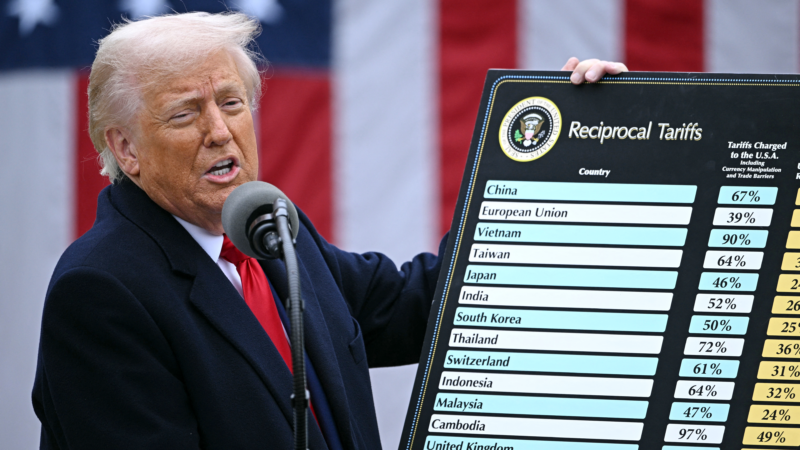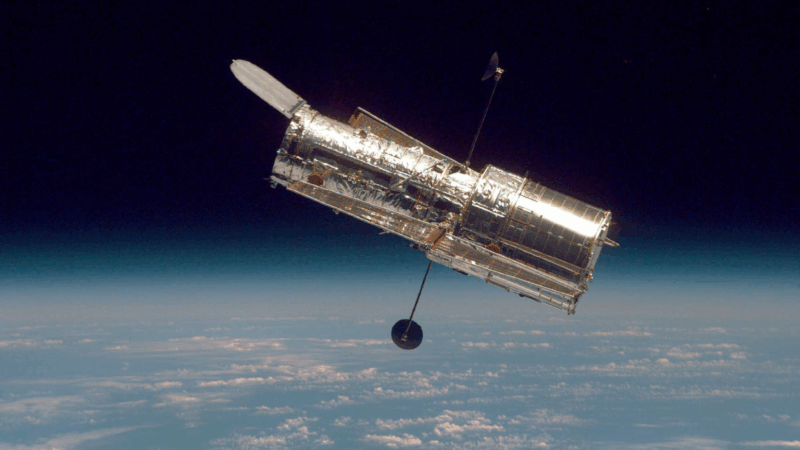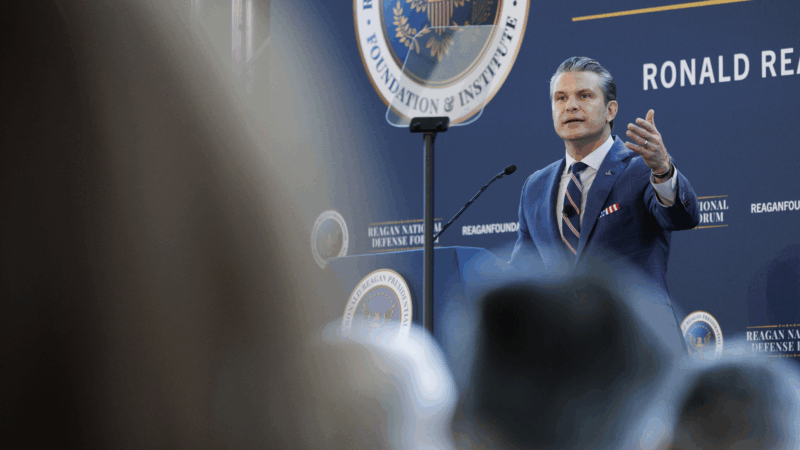How much will tariffs raise prices? Trump’s economists just revealed their answer
When President Trump announced his latest tariffs on Wednesday, he also ignited an economic mystery. Just where in the world did those numbers come from?
Holding up a sign on the White House lawn, Trump pointed to a new, 34% tax on imports from China; for the EU, a tax of 20%. Vietnam got 46%; India, 26%. Nigeria? Just 15 percent. Trump claimed that these “reciprocal” tariffs reflect how other countries already tax American products. “That means they do it to us and we do it to them,” he said. “Very simple.”
That is not true. These are not reciprocal tariffs. They do not correspond to the tariff rates in other countries. The truth behind where these tariffs came from is far more interesting.
On Wednesday night, the administration revealed how they calculated the new tariffs, which are the highest taxes on foreign products that America has seen in generations. (For a sense of that era, listen to the Planet Money episode on the Smoot-Hawley tariffs.)
Buried in that math, finally, is a straightforward answer to a question that Trump has long refused to straightforwardly answer: How much will his tariffs raise prices?
Diving deep into Trump’s tariff math
This is the Trump administration’s tariff formula, as revealed on Wednesday night by the Office of the U.S. Trade Representative :

Behind these Greek letters there’s a blunt but understandable approach. Essentially, the equation is trying to answer the question: How high should we set tariffs in order to get Americans to buy fewer foreign products, and close the trade deficit? This math says, the more of a trade deficit the U.S. has with another country, the higher that tariffs should be on that country’s products.
Take China for instance. Last year, Americans imported about $439 billion of products from China — chiefly electronics, clothing, and machinery — while exporting only $144 billion. According to this formula, a 67% tax on those Chinese products should correct this trade imbalance. (On Wednesday Trump announced that the actual tariff would only be half of that, or 34%.)
Here’s how Trump’s math says it would work: The 67% tax should raise the prices of Chinese products in the United States. And those higher prices should discourage Americans from buying Chinese products or products that contain Chinese components.
This is contrary to Trump’s previous public statements, where he has variously denied that tariffs would raise prices or has said that he “couldn’t care less.”
But according to Trump’s math, the tariffs are supposed to raise prices. Because those higher prices are the driving force that will close the trade deficit.
Want the latest updates on all things related to money and the economy? Sign up for the Planet Money newsletter.
There are a couple of major assumptions in Trump’s math. The biggest assumption involves how much the tariffs would cause prices to go up. Here, the administration makes an eyebrow-raising admission: It guesses that for every 10% hike in tariffs, there will be a 2.5% increase in prices.
Translation: Trump’s economists think that about a quarter of his tariffs will be passed onto American consumers in the form of higher prices.
Going back to the China example, here’s how it would all play out. According to Trump’s math, the 67% tariff on Chinese products would cause prices of those products to go up by 16.75%.
By coincidence, the administration also assumes that for every 10% increase in the price of foreign products, there will be a 40% decrease in how much Americans buy. (This is on the higher but still reasonable end of what mainstream economists believe.) So, faced with 16.75% higher prices, Trump expects Americans to decrease their purchases by four times that amount. Which brings us back to 67%.
In other words, a 67% tariff on Chinese products would reduce demand for Chinese products by … also 67%. So if Americans are currently buying $439 billion worth of Chinese products each year, Trump’s economists expect that the new tariffs will reduce that spending by $294 billion — which would close the trade deficit. At least in theory.
What’s wrong with Trump’s tariff math?
Certainly these new tariffs are not “reciprocal” tariffs. But the math behind them is not wholly invented or nonsensical, despite what some online have claimed.
In fact, for possibly the first time ever, the administration is explicitly acknowledging some of the basic economic logic of tariffs. Tariffs do raise prices. And higher prices do cause people to buy less stuff. And if Americans buy less foreign stuff, then America’s trade deficit with other countries will narrow.
But that’s not to say that any of Trump’s tariff calculations arrive at the right answer. For one, these are very rough, back-of-the-envelope calculations. As laid out, this formula treats every trading partner, every good and every industry the same. Bananas, oil, clothing, computers or cars — it doesn’t matter what a country sends to the U.S.
More importantly, the formula hinges on a big assumption about how much tariffs will raise prices. Trump’s math assumes that only a quarter of the tariffs would be passed onto American consumers in the form of higher prices. But economists who have studied Trump’s tariffs in 2018 — on steel and aluminum and various products from China — calculate that almost all of those tariffs ended up being passed onto Americans.
Aside from that, Trump’s tariff math also ignores the broader economic consequences of these sweeping new tariffs. They will have an effect on the overall American economy. They will influence exchange rates. And they will likely provoke retaliatory tariffs from other countries.
So, will Trump’s new tariffs actually close the trade deficit? Maybe, maybe not. But finally, at least, the administration has shown its work. And according to their calculations, raising prices and closing the trade deficit is what these tariffs are designed to do.
Tributes, not politics, play center stage as Trump hosts the Kennedy Center Honors
President Trump said he was closely involved with picking the honorees, and on Sunday he became the first president to host the Kennedy Center awards ceremony.
Thailand launches airstrikes along border with Cambodia as tensions reignite
Both sides accused the other of breaking a ceasefire that halted fighting earlier this year. Longstanding border disputes erupted into five days of combat in July that killed dozens.
Rafael Ithier, a legend of salsa music, dies at 99
The pianist, composer and arranger spent more than six decades turning El Gran Combo into one of the premier salsa institutions of Latin America and beyond.
Light from satellites will ruin majority of some space telescope images, study says
Astronomers have long been concerned about reflections from satellites showing up in images taken by telescopes and other scientific instruments.
Defense Department is reviewing boat strike video for possible release, Hegseth says
In a speech on Saturday, Defense Secretary Pete Hegseth defended the strikes, saying: "President Trump can and will take decisive military action as he sees fit to defend our nation's interests."
Bama, Miami in, Notre Dame out and Indiana No. 1 in College Football Playoff rankings
Nobody paying attention for the past 24 months would be surprised to see Indiana – yes, Indiana – leading the way into this year's College Football Playoff.









